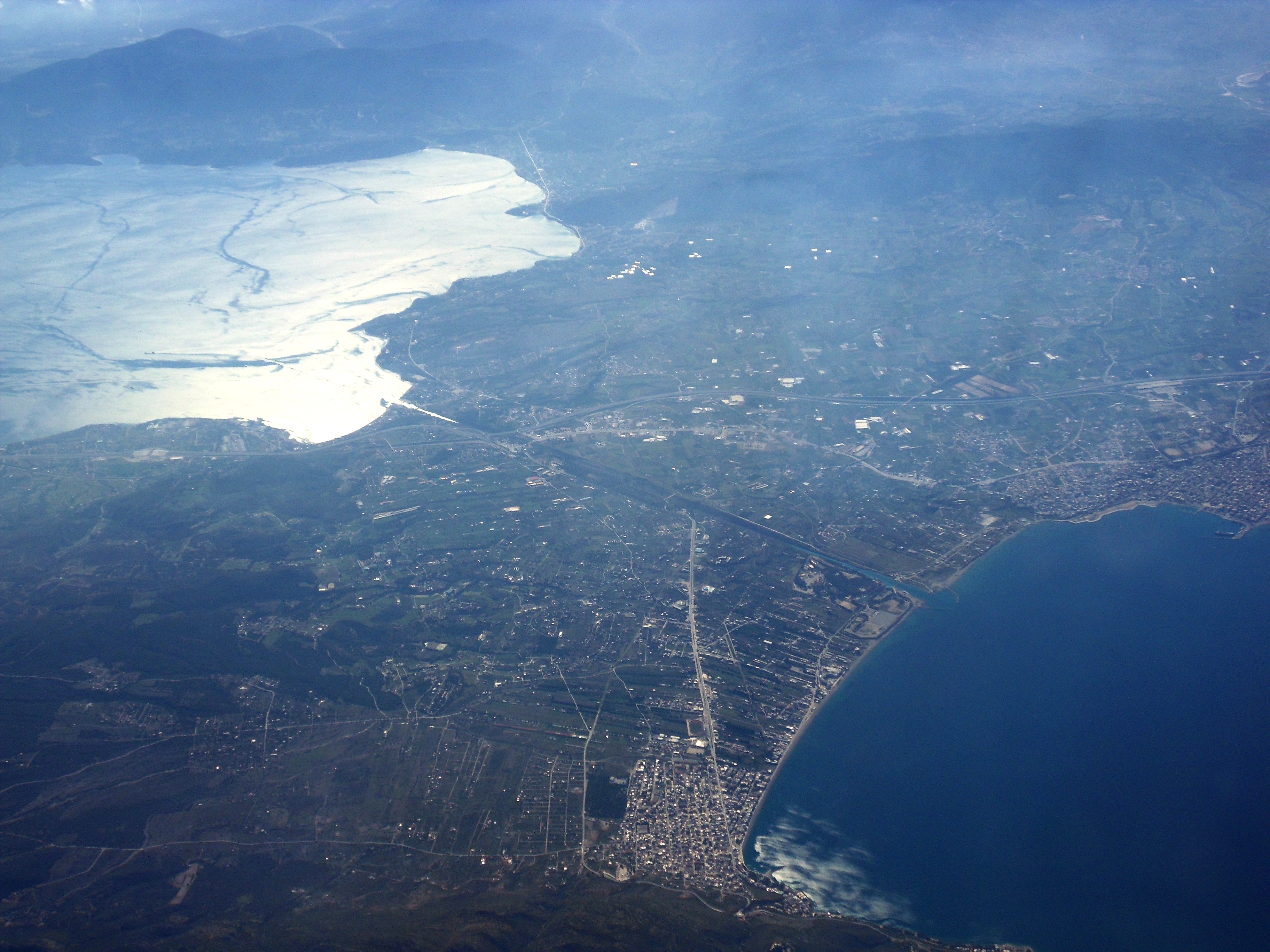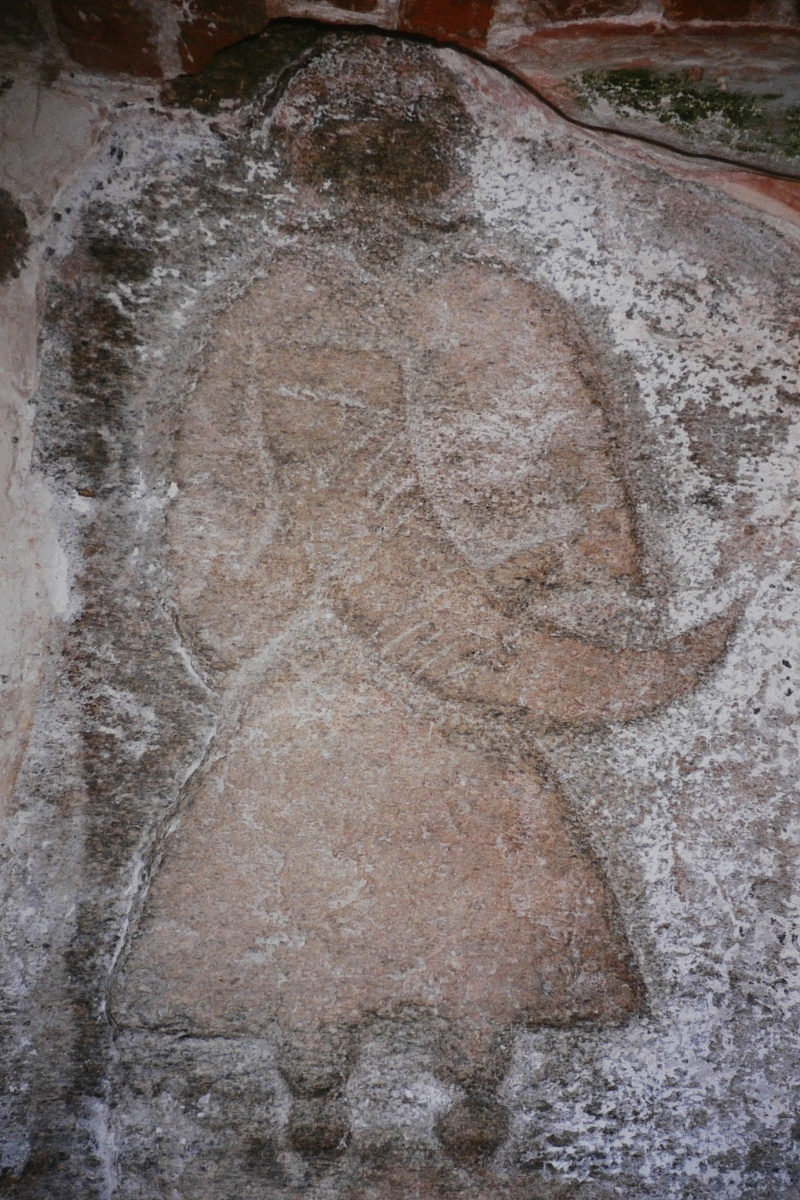|
Sclavenes
The ' (in Latin) or ' ( various forms in Greek) were early Slavic tribes that raided, invaded and settled in the Balkans in the Early Middle Ages and eventually became one of the progenitors of modern South Slavs. They were mentioned by early Byzantine chroniclers as barbarians having appeared at the Byzantine borders along with the Antes (East Slavs), another Slavic group. The Sclaveni were differentiated from the Antes and Wends (West Slavs); however, they were described as kin. Eventually, most South Slavic tribes accepted Byzantine or Frankish suzerainty, and came under their cultural influences and Chalcedonian Christianity. The term was widely used as a general catch-all term until the emergence of separate tribal names by the 10th century. Customs The Sclaveni had similar if not identical customs and culture to the Antes. They were carefully described by chroniclers such as Procopius and Maurice, whose works contribute greatly to our understanding of these two Early ... [...More Info...] [...Related Items...] OR: [Wikipedia] [Google] [Baidu] |
Early Slavs
The early Slavs were speakers of Indo-European languages, Indo-European dialects who lived during the Migration Period and the Early Middle Ages (approximately from the 5th to the 10th centuries AD) in Central Europe, Central, Eastern Europe, Eastern and Southeast Europe and established the foundations for the Slavs, Slavic nations through the Slavic states of the Early Middle Ages, Early and High Middle Ages. The Slavs' original homeland is still a matter of debate due to a lack of historical records; however, scholars generally place it in Eastern Europe, with Polesia being the most commonly accepted location. It is generally agreed that ancient Roman writers referred to the ancestors of Slavs as Vistula Veneti, Venedi. The proto-Slavic term ''Slav'' shares roots with Slavic terms for ''speech'', ''word'' , and perhaps was used by early Slavic people themselves to denote other people, who spoke languages similar to Slavs (ethnonym), theirs. The first written use of the name "S ... [...More Info...] [...Related Items...] OR: [Wikipedia] [Google] [Baidu] |
Sclaveni
The ' (in Latin language, Latin) or ' (Sclaveni#Terminology, various forms in Greek language, Greek) were Early Slavs, early Slavic tribes that raided, invaded and settled in the Balkans in the Early Middle Ages and eventually became one of the progenitors of modern South Slavs. They were mentioned by early Byzantine Empire, Byzantine chroniclers as Barbarians in the Byzantine Empire, barbarians having appeared at the Byzantine borders along with the Antes (people), Antes (East Slavs), another Slavic group. The Sclaveni were differentiated from the Antes and Wends (West Slavs); however, they were described as kin. Eventually, most South Slavic tribes accepted Byzantine Empire, Byzantine or Francia, Frankish suzerainty, and came under their cultural influences and Chalcedonian Christianity. The term was widely used as a general catch-all term until the emergence of separate tribal names by the 10th century. Customs The Sclaveni had similar if not identical customs and culture to ... [...More Info...] [...Related Items...] OR: [Wikipedia] [Google] [Baidu] |
Antes (people)
The Antes or Antae () were an early Slavic tribal polity of the 6th century CE. They lived on the lower Danube River, in the northwestern Black Sea region (present-day Moldova and central Ukraine), and in the regions around the Don River (in Middle and Southern Russia). Scholars commonly associate the Antes with the archaeological Penkovka culture. First mentioned in the historical record in 518, the Antes invaded the Diocese of Thrace sometime between the years of 533 and 545. Thereafter, they became Byzantine ''foederati'' and received gold payments and a fort (named "Turris" – the Latin word ''turris'' means 'tower') somewhere north of the Danube at a strategically important location to prevent hostile barbarians from invading Roman lands. Thus from 545 to the 580s, Antean soldiers fought in various Byzantine campaigns. The Pannonian Avars, Bulgars and Khazars attacked the Antes in the 7th century, causing disapperance of the Antes as a group and of the Penkovka ... [...More Info...] [...Related Items...] OR: [Wikipedia] [Google] [Baidu] |
West Slavs
The West Slavs are Slavic peoples who speak the West Slavic languages. They separated from the common Slavic group around the 7th century, and established independent polities in Central Europe by the 8th to 9th centuries. The West Slavic languages diversified into their historically attested forms over the 10th to 14th centuries. Today, groups which speak West Slavic languages include the Poles, Czechs, Slovaks, Silesians, Kashubians, and Sorbs. From the ninth century onwards, most West Slavs converted to Roman Catholicism, thus coming under the cultural influence of the Latin Church, adopting the Latin alphabet, and tending to be more closely integrated into cultural and intellectual developments in western Europe than the East Slavs, who converted to Eastern Orthodox Christianity and adopted the Cyrillic alphabet. Linguistically, the West Slavic group can be divided into three subgroups: Lechitic, including Polish, Silesian, Kashubian, and the extinct Polabian and Po ... [...More Info...] [...Related Items...] OR: [Wikipedia] [Google] [Baidu] |
Jordanes
Jordanes (; Greek language, Greek: Ιορδάνης), also written as Jordanis or Jornandes, was a 6th-century Eastern Roman bureaucrat, claimed to be of Goths, Gothic descent, who became a historian later in life. He wrote two works, one on Roman history (''Romana (Jordanes), Romana'') and the other on the Goths (''Getica''). The latter, along with Isidore of Seville's ''Historia Gothorum'', is one of only two extant ancient works dealing with the Origin stories of the Goths, early history of the Goths. Other writers, such as Procopius, wrote works on the later history of the Goths. ''Getica'' has been the object of much critical review. Jordanes wrote in Late Latin rather than the classical Ciceronian Latin. According to his own introduction, he had only three days to review what Cassiodorus had written and so he must also have relied on his own knowledge. Life Jordanes writes about himself almost in passing: Paria was Jordanes's paternal grandfather. Jordanes writes that he ... [...More Info...] [...Related Items...] OR: [Wikipedia] [Google] [Baidu] |
Peloponnese
The Peloponnese ( ), Peloponnesus ( ; , ) or Morea (; ) is a peninsula and geographic region in Southern Greece, and the southernmost region of the Balkans. It is connected to the central part of the country by the Isthmus of Corinth land bridge which separates the Gulf of Corinth from the Saronic Gulf. From the late Middle Ages until the 19th century, the peninsula was known as the Morea, a name still in colloquial use in its demotic form. The peninsula is divided among three administrative regions: most belongs to the Peloponnese region, with smaller parts belonging to the West Greece and Attica regions. Geography The Peloponnese is a peninsula located at the southern tip of the mainland, in area, and constitutes the southernmost part of mainland Greece. It is connected to the mainland by the Isthmus of Corinth, where the Corinth Canal was constructed in 1893. However, it is also connected to the mainland by several bridges across the canal, including two submers ... [...More Info...] [...Related Items...] OR: [Wikipedia] [Google] [Baidu] |
Asia Minor
Anatolia (), also known as Asia Minor, is a peninsula in West Asia that makes up the majority of the land area of Turkey. It is the westernmost protrusion of Asia and is geographically bounded by the Mediterranean Sea to the south, the Aegean Sea to the west, the Turkish Straits to the northwest, and the Black Sea to the north. The eastern and southeastern limits have been expanded either to the entirety of Asiatic Turkey or to an imprecise line from the Black Sea to the Gulf of Alexandretta. Topographically, the Sea of Marmara connects the Black Sea with the Aegean Sea through the Bosporus and the Dardanelles, and separates Anatolia from Thrace in Southeast Europe. During the Neolithic, Anatolia was an early centre for the development of farming after it originated in the adjacent Fertile Crescent. Beginning around 9,000 years ago, there was a major migration of Anatolian Neolithic Farmers into Neolithic Europe, Europe, with their descendants coming to dominate the continent a ... [...More Info...] [...Related Items...] OR: [Wikipedia] [Google] [Baidu] |
Latin Language
Latin ( or ) is a classical language belonging to the Italic languages, Italic branch of the Indo-European languages. Latin was originally spoken by the Latins (Italic tribe), Latins in Latium (now known as Lazio), the lower Tiber area around Rome, Italy. Through the expansion of the Roman Republic, it became the dominant language in the Italian Peninsula and subsequently throughout the Roman Empire. It has greatly influenced many languages, Latin influence in English, including English, having contributed List of Latin words with English derivatives, many words to the English lexicon, particularly after the Christianity in Anglo-Saxon England, Christianization of the Anglo-Saxons and the Norman Conquest. Latin Root (linguistics), roots appear frequently in the technical vocabulary used by fields such as theology, List of Latin and Greek words commonly used in systematic names, the sciences, List of medical roots, suffixes and prefixes, medicine, and List of Latin legal terms ... [...More Info...] [...Related Items...] OR: [Wikipedia] [Google] [Baidu] |
Slavic Paganism
Slavic paganism, Slavic mythology, or Slavic religion refer to the religious beliefs, myths, and ritual practices of the Slavs before Christianisation, which occurred at various stages between the 8th and the 13th century. The South Slavs, who likely settled in the Balkans during the 6th–7th centuries AD, bordering with the Byzantine Empire to the south, came under the sphere of influence of Eastern Christianity relatively early, beginning with the creation of writing systems for Slavic languages (first Glagolitic, and then Cyrillic script) in 855 by the brothers Saints Cyril and Methodius and the adoption of Christianity in Bulgaria in 864 and 863 in Great Moravia. The East Slavs followed with the official adoption in 988 by Vladimir the Great of Kievan Rus'. The process of Christianising the West Slavs was more gradual and complicated compared to their eastern counterparts. The Moravians accepted Christianity as early as 831, the Bohemian dukes followed in 845, and the ... [...More Info...] [...Related Items...] OR: [Wikipedia] [Google] [Baidu] |






